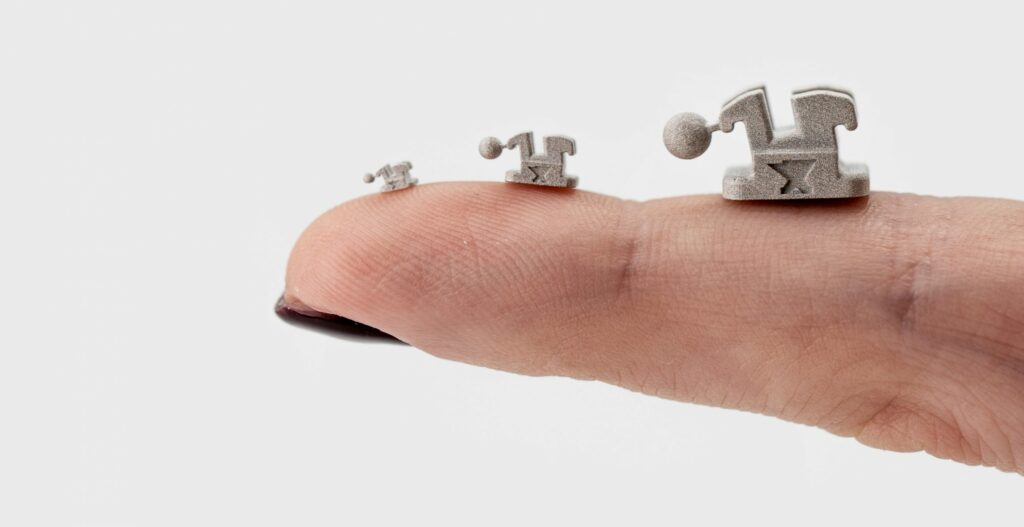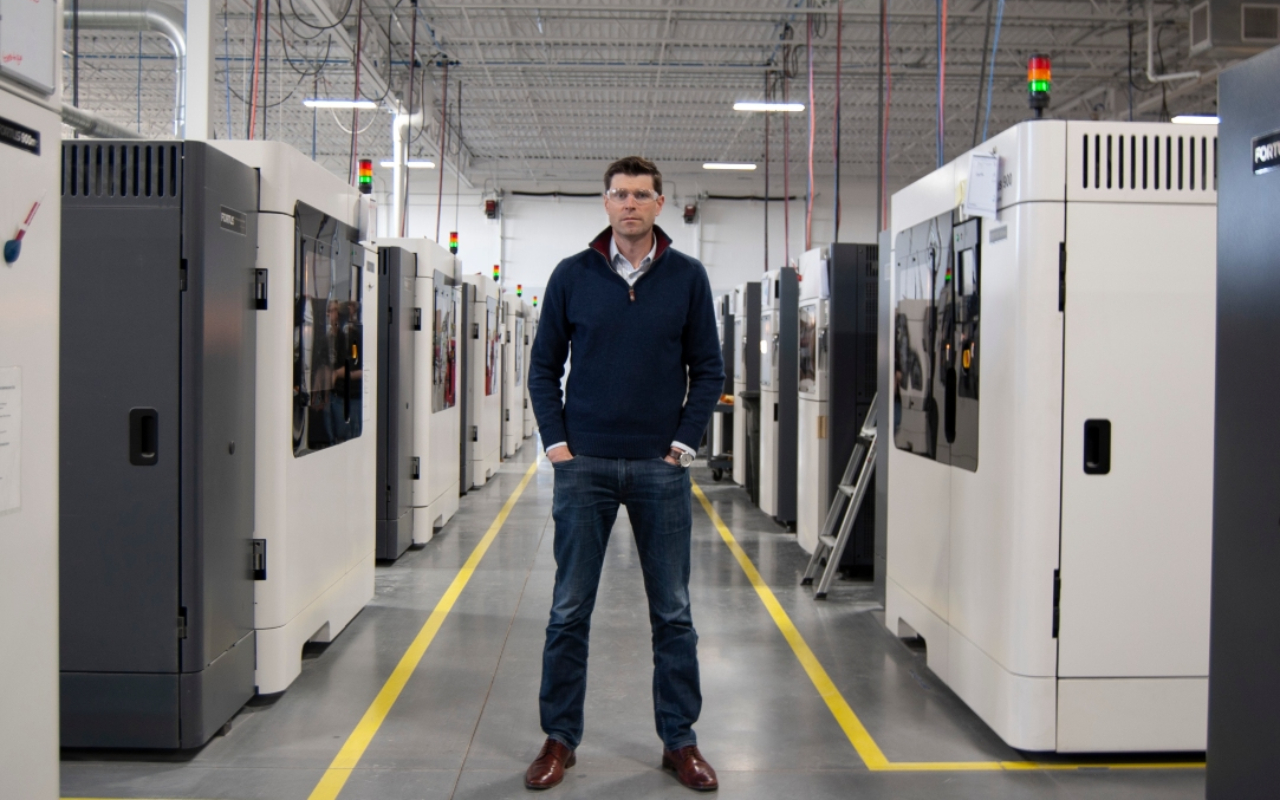Technological innovations are considered among the top priorities for the healthcare industry, especially following the impact of the pandemic, which has challenged the traditional functioning of healthcare systems worldwide. Three years after the onset of Covid-19 took center stage, it has become clear that a paradigm shift has accelerated the need for new and innovative ecosystems, promising to aid complicated surgeries, help patient recovery, and ease time and financial pressures for medical institutions.
In the last decade, the evolution of additive manufacturing has made the technology more valuable and essential to the healthcare industry than ever before. Anticipating that the market for medical device additive manufacturing could grow to $9.8 billion by 2031, it’s no wonder that Formlabs estimates that more than 90% of the top 50 medical device companies currently use 3D printing to create accurate prototypes and medical devices. Even more so, pure-play 3D printing firms like Stratasys, GE Additive, 3D Systems, EOS, and Materialise have paved the way for a lot of the innovative work that has been done in the sector.
We spoke with several experts and industry leaders to find out the most critical 3D printing trends in healthcare to watch in 2023. Here are the top predictions:
Personalized medicine to drive wider AM adoption
Not realizing its full potential yet, one of the hardest problems for the healthcare industry has been to customize treatment for each patient. As a result, there are plenty of challenges facing precision medicine, particularly when it comes to scaling these programs. Although certain aspects of individualized medicine could be pretty obvious, particularly when it comes to emerging technologies such as genetic sequencing and wireless health monitoring devices, but when it comes to bringing orthopedic implant surgeries to precision medicine, the practicality of 3D printing can outweigh the challenges. And even though several emerging technologies are looking to disrupt conventional “one-size-fits-all” approaches to tailored treatments, 3D printing can be considered the dominant force here.
Still, even though AM has revolutionized many personalized medical treatments already, there are hurdles associated with regulatory approvals for routine use and common standards that need to be established. However, this hasn’t stopped companies like 3D Systems from moving ahead. Executive Vice President of the brand’s Healthcare Solutions, Menno Ellis, estimates that personalized medicine will continue to enable better patient outcomes and improved economics for care providers.
“I anticipate this will drive wider adoption of AM for craniomaxillofacial applications, as well as expansion into orthopedic and radiation oncology, and other parts of the human anatomy,” suggests Ellis. “I foresee adoption being further accelerated because of faster turnaround times for surgical planning cases, enabled by improvements in surgical planning software and 3D printing technology for surgical tools and models.”
Even more so, the senior executive considers that a strong integration of AI-based tools to create optimization and automation in surgical planning procedures will move things along quicker and easier to use at the point of care, which will increase adoption in these emerging market segments in 2023.
Customized patient-specific care is certainly one of the ongoing trends of this decade in 3D printing for healthcare. However, John Kawola, CEO of Boston Micro Fabrication (BMF), adds other trends to the evolution of 3D printing in medicine, including miniaturization, less invasive procedures, advanced materials development, and continued improvement of AM systems and software. As these trends gravitate towards a common goal, improving medical device and life science applications, Kawola expects that in 2023 the work of companies like BMF will not only support the needs of prototypes but assist in “migrating 3D printing technologies into end-use applications.”
 Micro 3D printing. Image courtesy of Incus.
Micro 3D printing. Image courtesy of Incus.Will casts finally make it in 2023?
Another specific branch of personalized medicine, and one of the most common examples of a one-size-fits-all approach, that is bound to see changes in 2023 is casts and splints. As part of the orthopedic device family, they are usually ready-made or off-the-shelf products. Although 3D printing has long been involved in their development, it is unclear whether the market has fully accommodated them. For clinical genomics expert and Director of The Medical Futurist Institute, Dr. Bertalan Meskó, the faith of 3D printed casts should be decided once and for all in 2023.
“The concept of 3D printed casts has been around for a decade, but still it’s extremely hard to find healthcare services offering such casts. If the technology never becomes so affordable to replace plaster casts, we should confirm it now,” indicates Meskó.
3D printed casts have much to offer compared to their plastic or fiberglass counterparts. Some of the best hospitals in the world are making them, like the Mayo Clinic, and commercial companies like ActivArmor. Except perhaps it’s cost prohibitive, and the logistics are a deterrent for many startups, and it’s probably why they haven’t “broken into healthcare,” as Meskó suggests. Although 3D printed casts are probably the right choice in most cases, are much more hygienic and more accessible to apply than traditional options, the question still remains: will they ever become widely available?
Promising orthopedic implants
Considered one of the fastest growing markets in medicine, the orthopedic devices industry ranks third in sales, after cardiology and in-vitro diagnostics, where cutting-edge technology can make a difference in patients’ lives, especially since one size does not fit all.
“One area that’s really embraced 3D printing technology is medical orthopedic implants,” explains Fathom CEO Ryan Martin. “Although, there are lots of applications in this field, ranging from hips, knees, or even shoulders, the ability to customize to improve the patient experience is all made possible with additive manufacturing. You can create a structure that’s bone-like with 3D printing, which allows patients to heal much faster because the body responds to these orthopedic implants more quickly.”
 Fathom Manufacturing CEO Ryan Martin at the company’s headquarters in Hartland. Image courtesy of Fathom Manufacturing.
Fathom Manufacturing CEO Ryan Martin at the company’s headquarters in Hartland. Image courtesy of Fathom Manufacturing.Today, roughly 30% of the company’s revenues come from the medical space, but most of what Fathom manufactures for its orthopedic medical customers is done by leveraging advanced CNC machining capabilities. However, as the company sees the number of applications for 3D metal printing continuing to expand, it hopes to transition into 3D printing of metal orthopedics seamlessly shortly, especially in low-to-mid-volume medical device manufacturing.
Ellis also anticipates that beyond personalization, advances in hardware and software will enable the technical feasibility and economic viability of 3D printing larger, more complex orthopedic devices utilizing industry-preferred materials. According to the 3D Systems executive, introducing novel materials, such as 3D printable PEEK, and new technology platforms will be an additional catalyst for point-of-care providers to deploy personalized medicine solutions in new areas.
Bioprinting validity
When discussing 3D printing in healthcare, it’s hard to miss the relevance of the bioprinting field. Especially if this segment’s market size is expected to reach almost $1.2 billion in 2028, compared with just $182 million today. A recent SmarTech Analysis report states that nearly 70% of the bioprinting industry will come from applications and service revenue. At the same time, bioprinters are expected to bring in around $100 million in revenues by 2031.
Even though 2022 saw fewer major breakthroughs in bioprint, experts recognize that there are more peer-reviewed studies behind bioprinting announcements than ever before. For Meskó, in healthcare, “only technologies with evidence in the background can be used in practice,” so it’s a good sign going into 2023.
 Systemic Bio CEO Taci Pereira. Image courtesy of Systemic Bio.
Systemic Bio CEO Taci Pereira. Image courtesy of Systemic Bio.Similarly, Systemic Bio CEO Taci Pereira said that with bioprinting technologies’ growing availability and popularity, she expects to see a continued rise in publications covering novel methods to recapitulate relevant organ and disease functions. In addition, she says that bioprinting is no longer limited to a few academic labs as it used to be five years ago.
The biotech entrepreneur added that organ and disease models would “evince greater complexity, as there have been advances in the tools available to those performing the research. With the rise of microphysiological systems, I believe the pharmaceutical industry will look for models that can deliver higher complexity for safety and efficacy testing, emphasizing reproducibility. In addition, production-scale bioprinting can play a key role in manufacturing these models to enable higher throughput testing with confidence. Finally, growth in the quality and quantity of data captured from these systems will open the way for machine learning to generate in silico models, which can further impact the speed with which we can screen novel therapeutics using these technologies.”
Meskó added that he expects bioprinting of functional kidney tissue would be the anticipated breakthrough for 2023 after the skin, bone, cartilage, and liver have many studies already. He also hopes to see bioprinters deployed in healthcare institutions as support technologies in cell therapies.
This only proves that technology is much more accessible today than it ever was. For Allevi Commercial Director Hanchih Wu, this move has helped bench scientists and medical professionals benefit from a process that can better recapitulate in vivo human biology to answer critical biomedical questions like never before, and she believes this trend will continue into 2023.
To learn more about 3D printing in medicine, register here for the Additive Manufacturing Strategies business summit on February 7-9, 2023, in New York.
Subscribe to Our Email Newsletter
Stay up-to-date on all the latest news from the 3D printing industry and receive information and offers from third party vendors.
You May Also Like
Human Remains Could Be Identified with the Help of Forensic 3D Printing
I’m still in awe at what additive technologies can accomplish, from creating alternative meats, automotive parts, shoe insoles, and surgical models, to giving faces to the lost. That is to...
3D Printing News Briefs, May 17, 2023: Stress-Resistant Alloy, 3D Printed Trophies, & More
In today’s 3D Printing News Briefs, we’re starting off with a little research, as materials scientists developed a 3D printing process that produces an extremely stress-resistant alloy. Moving on to...
On the Ground with COBOD Construction 3D Printing at Ohio State
This winter, The Ohio State University’s Center for Design and Manufacturing Excellence (CDME), which is one of the country’s largest additive research groups, received a COBOD BOD2 3D construction printer...
3D Printing Webinar & Event Roundup: April 2, 2023
You can breathe easy this week, because it will be much less hectic than last week, at least in terms of 3D printing webinars and events to attend! There will...
































